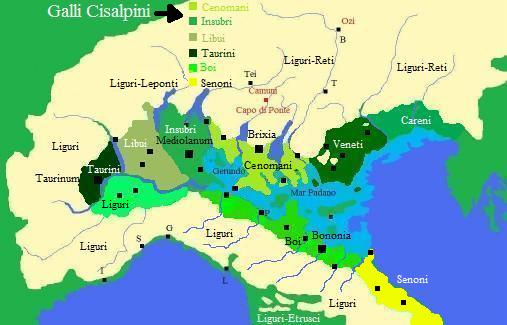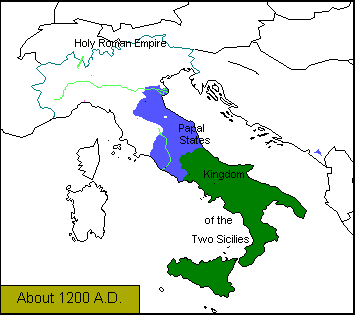Olympus Mons
Regular Member
- Messages
- 536
- Reaction score
- 80
- Points
- 28
Unbelievable.
Follow along with the video below to see how to install our site as a web app on your home screen.

Note: This feature currently requires accessing the site using the built-in Safari browser.
Realy shocking, I was complaining about geneticists.
Maybe I need to write posts in French as Italians don't get nothing when I write in English about migrations from the south.
About possible migrations from the east providing Etruscans... I wouldn't try to explain in any language!

We even understand what you wish you could say about Sardinians and Italians, but you don’t.
The problem is not the Language in your posts, but the content.
Why would these geneticists on a personal level care whether Sardinians have Phoenician or Carthage ancestry and how much is in them? Most if not all of the authors aren't even Sardinian to begin with so why would they have Nordicist concerns about Sardinian genetics and middle eastern/North African ancestry (not implying they would have these racial concerns if they actually are Sardinian)Realy shocking, I was complaining about geneticists.
Maybe I need to write posts in French as Italians don't get nothing when I write in English about migrations from the south.
About possible migrations from the east providing Etruscans... I wouldn't try to explain in any language!

No doubt that U152 is the elephant in the room, but for some reason P312(xU152, L21) doesn't get a lot of mention but it's at non negligible frequencies throughout Italy.
ie:
https://www.tandfonline.com/doi/full/10.1080/03014460.2017.1409801
There is no doubt though that Iran_Neo came from the eastern Mediterranean, because it's at this time (BA) that this component spreads to the Levant.
Indeed, IMO it can theoretically indicate (especially considering the north-to-south gradient and the higher proportion of non-U152 subclades in mountainous areas) a pre-Italo-Celtic Indo-European (or Indo-Europeanized) incursion into Italy, linguistically replaced by "northern" Italic and Celtic peoples after the Bronze Age collapse (or not? We don't know exactly what linguistic branch peoples as Siculi, Sicel and other less well known illiterate tribes spoke, not to speak of the potentially highly divergent but eerily "IE-like" North Picene language). The decreasing frequency of U152 and its lower than average frequency in some mountainous areas suggest a second layer of R1b expansion into Italy, and considering that Italic and Celtic are both dated as languages that started to split into several sub-branches around ~1100 BC, it would make sense that these two languages and their corresponding peoples expanded and absorbed many others, IE or not, in a relatively late period (Late Urnfield and Early Hallstatt) - and these pre-Italo-Celtic peoples just did not leave any written attestation of their languages, because most of Europe was totally illiterate by then. In my opinion the U152 concentration in more northern parts of the Italian peninsula also suggests that its prevalence was not that ancient in Italy for it to spread more evenly.Northern Italy (Bergamo Valleys and plain, Tortona-Voghera and Borbera Valley) is characterised by an extremely high incidence of the R1b haplogroup (69.0%) when compared to all the other main haplogroups whose frequencies do not reach 10%. This haplogroup, which characterises a wide portion of the gene pool of the examined populations, shows a decreasing frequency pattern from North to South Italy, where it shows its lowest incidence (27.5%). This pattern is virtually totally ascribable to R1b-U152, the most represented R1b sub-lineage, whereas no frequency gradients were detected for the other sub-lineages. R1b-S116*(xU152, M529) is equally represented in all the Italian populations (Figure 3, dusty rose sector in secondary pies). This shows the highest frequencies in two isolated areas of Northern Italy: Borbera Valley (12.9%) and Bergamo Valleys (17.9%). The frequency peak is particularly noticeable in Bergamo Valleys in comparison to the neighbouring plain area (17.9% vs 3.8%, respectively, p < .01).
[...]
Thus, taking into account that the highest reported incidence of R1b-S116*(xU152, M529) is in Iberia (Adams et al., 2008 Adams SM, Bosch E, Balaresque PL, Ballereau SJ, Lee AC, Arroyo E, López-Parra AM, et al. 2008. The genetic legacy of religious diversity and intolerance: paternal lineages of Christians, Jews, and Muslims in the Iberian Peninsula. Am J Hum Genet 83:725–736.[Crossref], [PubMed], [Web of Science ®], , [Google Scholar]; Myres et al., 2011 Myres NM, Rootsi S, Lin AA, Järve M, King RJ, Kutuev I, Cabrera VM, et al. 2011. A major Y-chromosome haplogroup R1b Holocene era founder effect in Central and Western Europe. Eur J Hum Genet 19:95–101.[Crossref], [PubMed], [Web of Science ®], , [Google Scholar]), its high frequency in the relatively isolated populations of the Bergamo and Borbera Valleys could represent the outcome of ancient gene flow from that area, possibly magnified by genetic drift. On the other hand, R1b-M412*, so far described only in Turkey, Iran, Cyprus and Crete (Myres et al., 2011 Myres NM, Rootsi S, Lin AA, Järve M, King RJ, Kutuev I, Cabrera VM, et al. 2011. A major Y-chromosome haplogroup R1b Holocene era founder effect in Central and Western Europe. Eur J Hum Genet 19:95–101.[Crossref], [PubMed], [Web of Science ®], , [Google Scholar]; Voskarides et al., 2016 Voskarides K, Mazières S, Hadjipanagi D, Di Cristofaro J, Ignatiou A, Stefanou C, King RJ, et al. 2016. Y-chromosome phylogeographic analysis of the Greek-Cypriot population reveals elements consistent with Neolithic and Bronze Age settlements. Investig Genet 7:1.[Crossref], [PubMed], , [Google Scholar]), is observed in all the four Southern Italian samples, all from the ancient Magna Graecia area, but only sporadically in population groups from Northern Italy. The R1b-M412* Y chromosomes could, therefore, represent the legacy of an Eastern Mediterranean input associated with the early Hellenic colonisation, and/or the more recent Byzantine domination. This scenario is supported by the high frequency of R1b-M412* in the Griko-speaking community of Grecìa Salentina (13.4%), where haplogroup R1b-M412* probably reflects ancient colonisation events from Greek-speaking islands rather than continental Greece.
The R1a haplogroup is observed along the entire Peninsula. With the exception of the Tortona-Voghera sample, it displays lower frequencies in the North and in the Centre in comparison with the southern populations, especially those of the Ionian Coast (8.6% in Ionian Calabria, 5.9% in Apulia and 15.8% in Grecìa Salentina). R1a-M17 represents an important component of the modern gene pool of Greece, where it reaches its highest frequencies (16.3% and 22.0%, in mainland Greece and in Thracia, respectively) (Battaglia et al., 2009 Battaglia V, Fornarino S, Al-Zahery N, Olivieri A, Pala M, Myres NM, King RJ, et al. 2009. Y-chromosomal evidence of the cultural diffusion of agriculture in southeast Europe. Eur J Hum Genet 17:820–830.[Crossref], [PubMed], [Web of Science ®], , [Google Scholar]; Heraclides et al., 2017 Heraclides A, Bashiardes E, Fernández-Domínguez E, Bertoncini S, Chimonas M, Christofi V, King J, et al. 2017. Y-chromosomal analysis of Greek Cypriots reveals a primarily common pre-Ottoman paternal ancestry with Turkish Cypriots. PLoS One 12:e0179474.[Crossref], [PubMed], [Web of Science ®], , [Google Scholar]). Taking into account that it is found virtually only as R1a-M17*(xM458) in both the Southern Italian samples and in mainland Greece, it is likely that R1a-M17* is a signature of the Southern Balkan (mainland Greece) influence into Southern Italy. Thus, differently to haplogroup R1b-M412*, R1a-M17* seems a hallmark of a significant male seaborne input from Balkan populations towards the eastern coast of Southern Italy.
This part of the study linked above is very intriguing:
Indeed, IMO it can theoretically indicate (especially considering the north-to-south gradient and the higher proportion of non-U152 subclades in mountainous areas) a pre-Italo-Celtic Indo-European (or Indo-Europeanized) incursion into Italy, linguistically replaced by "northern" Italic and Celtic peoples after the Bronze Age collapse (or not? We don't know exactly what linguistic branch peoples as Siculi, Sicel and other less well known illiterate tribes spoke, not to speak of the potentially highly divergent but eerily "IE-like" North Picene language). The decreasing frequency of U152 and its lower than average frequency in some mountainous areas suggest a second layer of R1b expansion into Italy, and considering that Italic and Celtic are both dated as languages that started to split into several sub-branches around ~1100 BC, it would make sense that these two languages and their corresponding peoples expanded and absorbed many others, IE or not, in a relatively late period (Late Urnfield and Early Hallstatt) - and these pre-Italo-Celtic peoples just did not leave any written attestation of their languages, because most of Europe was totally illiterate by then. In my opinion the U152 concentration in more northern parts of the Italian peninsula also suggests that its prevalence was not that ancient in Italy for it to spread more evenly.


modern Greeks have it, as all Southern Europeans
Utilizzando Tapatalk
Why is ancient Italy and Rome so understudied despite proportionately being way more important to european history than obscure swamps
This thread has been viewed 106403 times.
